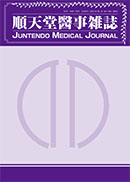Volume 59, Issue 2
Displaying 1-17 of 17 articles from this issue
- |<
- <
- 1
- >
- >|
-
2013Volume 59Issue 2 Pages C5902_1
Published: April 30, 2013
Released on J-STAGE: November 26, 2014
Download PDF (1309K)
-
2013Volume 59Issue 2 Pages C5902_2
Published: April 30, 2013
Released on J-STAGE: November 26, 2014
Download PDF (1177K)
-
2013Volume 59Issue 2 Pages 112-119
Published: April 30, 2013
Released on J-STAGE: November 26, 2014
Download PDF (3615K) -
2013Volume 59Issue 2 Pages 120-136
Published: April 30, 2013
Released on J-STAGE: November 26, 2014
Download PDF (7183K)
-
2013Volume 59Issue 2 Pages 138-151
Published: April 30, 2013
Released on J-STAGE: November 26, 2014
Download PDF (10770K) -
2013Volume 59Issue 2 Pages 152-162
Published: April 30, 2013
Released on J-STAGE: November 26, 2014
Download PDF (9586K) -
2013Volume 59Issue 2 Pages 163-170
Published: April 30, 2013
Released on J-STAGE: November 26, 2014
Download PDF (1213K) -
2013Volume 59Issue 2 Pages 171-177
Published: April 30, 2013
Released on J-STAGE: November 26, 2014
Download PDF (5132K)
-
2013Volume 59Issue 2 Pages 178-181
Published: April 30, 2013
Released on J-STAGE: November 26, 2014
Download PDF (997K) -
2013Volume 59Issue 2 Pages 182-188
Published: April 30, 2013
Released on J-STAGE: November 26, 2014
Download PDF (1008K)
-
2013Volume 59Issue 2 Pages 189-193
Published: April 30, 2013
Released on J-STAGE: November 26, 2014
Download PDF (7499K)
-
2013Volume 59Issue 2 Pages 194-198
Published: April 30, 2013
Released on J-STAGE: November 26, 2014
Download PDF (4180K)
-
2013Volume 59Issue 2 Pages 204-205
Published: April 30, 2013
Released on J-STAGE: November 26, 2014
Download PDF (2330K) -
2013Volume 59Issue 2 Pages 206-208
Published: April 30, 2013
Released on J-STAGE: November 26, 2014
Download PDF (2439K)
-
2013Volume 59Issue 2 Pages 209
Published: April 30, 2013
Released on J-STAGE: November 26, 2014
Download PDF (877K)
-
2013Volume 59Issue 2 Pages 210
Published: April 30, 2013
Released on J-STAGE: November 26, 2014
Download PDF (913K)
-
2013Volume 59Issue 2 Pages 211
Published: April 30, 2013
Released on J-STAGE: November 26, 2014
Download PDF (966K)
- |<
- <
- 1
- >
- >|
